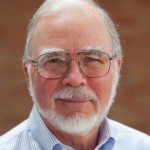
Ray A. Williamson, PhD
Editor, Apogeo Spatial
LETTER FROM THE EDITOR
As I Look Back on the half of this year, I am struck with the increasing speed of exciting changes in the Earth observation community. I see new systems, new analytic software and new ways of approaching the distinct opportunities and challenges of understanding Earth and its complex components. How we use them to address our environmental concerns will be key to our quality of life and to Earth’s long-term sustainability. The articles in this summer issue exemplify several of these developments.
For example, we could all probably use more accurate, reliable GPS. In “Project Sextant,” Matteo Luccio in the article here examines the efforts by the Aerospace Corporation to develop new means to strengthen GPS, to avoid or mitigate loss of signal from intentional jamming or obscuring natural conditions around the receiver.
In the world of global commodities, traders always need more accurate information about the global marketplace. This is what Ursa Space Systems Inc., a young company that focuses on providing global economic intelligence, is doing (here). The company uses satellite radar data and proprietary algorithms to deliver economic information about the global oil and gas supply chain. Their business model is a powerful reminder that satellite radar data are fnding important new business niches.
As noted (here), Tesat-Spacecom is responding to the challenge of getting terabytes of data down from the satellites in space using developments in laser (optical) data transfer, including space data relay, at 1.8 Gpbs – signifcantly faster than legacy systems.
The interest in space entrepreneurship was highly evident in this year’s International Space University Summer Space Studies Program (ISU SSP17) in which I led the Policy, Economics and Law Department. SSP is an intensive nine-week international, interdisciplinary, and intercultural program designed to educate the space leaders of tomorrow. This year the SSP was held in partnership with the Cork, Ireland, Institute of Technology (CIT).
While in Cork, I spoke with several lecturers and participants who were starting companies using data from space systems. One intriguing example is a recent start-up begun by our department’s Teaching Associate, Ana Cristina Galhego Rosa. She is a Brazilian lawyer and SSP alumna who became concerned about the spread of the zika virus in her country by the aedes aegypti mosquito, which also carries a number of other dangerous vector-borne diseases. Consulting remote sensing experts, Ana Cristina developed a way to identify areas of high risk for the mosquito using a proprietary combination of ground and space-borne sensors. This is highly valuable information for the tourist industry and for business people who travel to potentially infected areas. Her new company, Dipteron, is registered in Germany.
An important part of the SSP is the research, writing and publishing of a Team Project, resulting in a 100-page report. Participants may be space professionals, graduate students, or persons looking to change their profession to a space-related one.
This year, three projects with relevance to Earth observations stand out: The Internet of Things for Space and Energy; Roadmaps and Strategies for National Space Sector Capacity Building; and A Handbook on How to Start Your Own Space Company. In each of these projects, Earth observation data and technologies can play a signifcant role.
In all of them, the use of open source data and software, as described in Matteo Luccio’s piece on open geospatial software (here), could be an important element of achieving success.
This Fall, Apogeo Spatial is sponsoring two excellent conferences that bring together stakeholders from around the world, including Geography2050, which will take place in New York City Nov. 16-17 with the theme of “The Future of Mobility,” and the Summit on Earth Observation Business, a gathering in Paris organized by Euroconsult, Sept. 14-15, as part of World Satellite Business Week. Join us!
Sincerely, Ray Williamson
